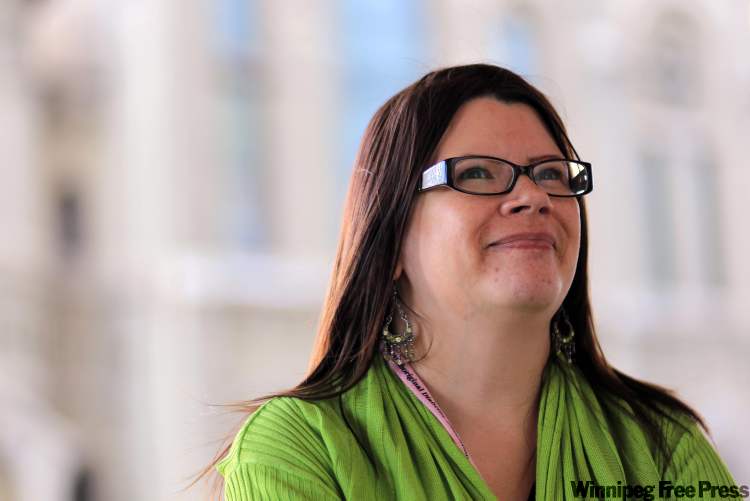Diabetes hits First Nations hard
Poverty a big factor, advocate warns
Advertisement
Read this article for free:
or
Already have an account? Log in here »
To continue reading, please subscribe:
Monthly Digital Subscription
$1 per week for 24 weeks*
- Enjoy unlimited reading on winnipegfreepress.com
- Read the E-Edition, our digital replica newspaper
- Access News Break, our award-winning app
- Play interactive puzzles
*Billed as $4.00 plus GST every four weeks. After 24 weeks, price increases to the regular rate of $19.00 plus GST every four weeks. Offer available to new and qualified returning subscribers only. Cancel any time.
Monthly Digital Subscription
$4.75/week*
- Enjoy unlimited reading on winnipegfreepress.com
- Read the E-Edition, our digital replica newspaper
- Access News Break, our award-winning app
- Play interactive puzzles
*Billed as $19 plus GST every four weeks. Cancel any time.
To continue reading, please subscribe:
Add Winnipeg Free Press access to your Brandon Sun subscription for only
$1 for the first 4 weeks*
*$1 will be added to your next bill. After your 4 weeks access is complete your rate will increase by $0.00 a X percent off the regular rate.
Read unlimited articles for free today:
or
Already have an account? Log in here »
Hey there, time traveller!
This article was published 16/02/2011 (5324 days ago), so information in it may no longer be current.
The growing epidemic of Type 2 diabetes is wreaking havoc on Canada’s First Nations communities, the leader of an advocacy and education group warned Tuesday.
Dina Bruyere, executive director of the National Aboriginal Diabetes Association, said the potentially deadly disease hits Aboriginal Canadians harder than anyone.
“It’s devastating our communities and our families,” Bruyere said in an interview at the start of the two-day national conference on diabetes and aboriginal peoples that has drawn about 400 delegates to the city.

“Diabetes, in my opinion, affects aboriginal people significantly more because of the role elders play in our families,” said Bruyere, 41, who was raised on Manitoba’s Sagkeeng First Nation. “Elders provide support to the family unit, they teach, they mentor, but now we’re losing them to diabetes and we’re losing their support and teachings and guidance.
“For example, my mother died of diabetes at age 60. I also lost my grandmother, auntie and uncle to diabetes-related disease. It was all kidney failure.”
Aboriginal Canadians are three to five times more likely than the general population to develop Type 2 diabetes, which accounts for at least 90 per cent of diabetes cases. On some First Nations, 50 per cent of residents are affected.
Last week, the Canadian Diabetes Association warned Manitoba is facing a “diabetes storm” that could threaten the sustainability of the province’s health system and economy. It predicts the number of confirmed diabetics in Manitoba will jump to more than 139,000 cases in 2020 from the current level of 94,000 cases, a staggering 48 per cent increase.
Bruyere said Aboriginal Canadians, whether they live in remote communities or in Winnipeg, are more susceptible to Type 2 diabetes because so many are trapped in poverty. “It’s not just reserves, it’s all over,” she said. “We can’t afford the food, the recreation, the medical options — so of course we’re going to be dying of it more than anyone else.
“Our biggest issue is food security and access to recreation opportunities. A lot of our people don’t have the ability to purchase healthy foods. We’re at the bottom of every socio-economic indicator out there. When you’re mired in poverty, your choices are limited.”
The explosion in Type 2 diabetes stems from Canada’s aging population, rising obesity rates and increasingly sedentary lifestyles. It’s a leading cause of blindness, amputations, strokes, heart disease and kidney failure.
Bruyere said there is a lot of anecdotal evidence, but no accurate, up-to-date statistics on the number of Aboriginal Canadians living with Type 2 diabetes, in which the body either does not produce insulin or can’t use the insulin it makes.
Liberal Leader Jon Gerrard said it is essential for governments to make Type 2 diabetes a reportable disease and keep track of the percentage of cases involving First Nations people.
“With something like diabetes, we should make it reportable so we know the extent of the epidemic,” Gerrard said in an interview. “If you don’t have accurate statistics, you’re guessing about what’s happening.
“Let’s make it a reportable disease so we know month to month where we are… to see if the changes you’re trying to implement are having any impact.”
Doug Speirs is taking a break from his regular columns to work on a special assignment — a personal look at life with Type 2 diabetes, and what impact the disease has across the province.
doug.speirs@freepress.mb.ca

